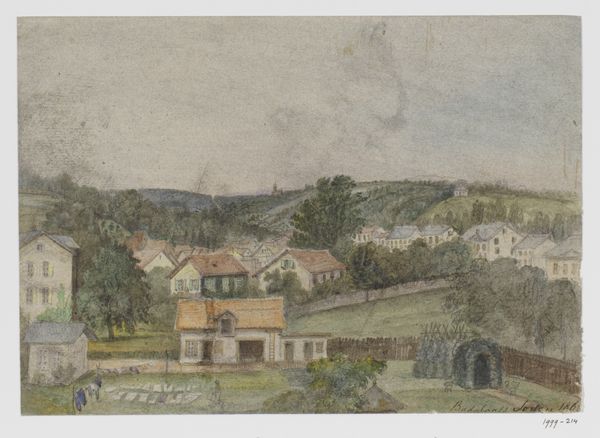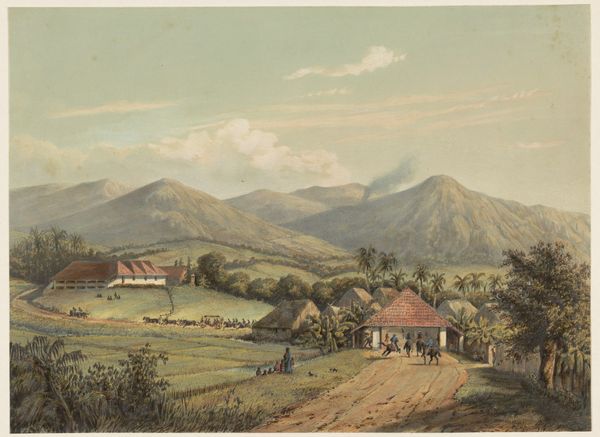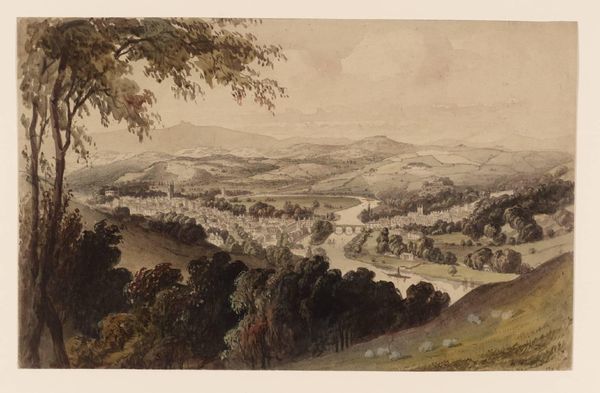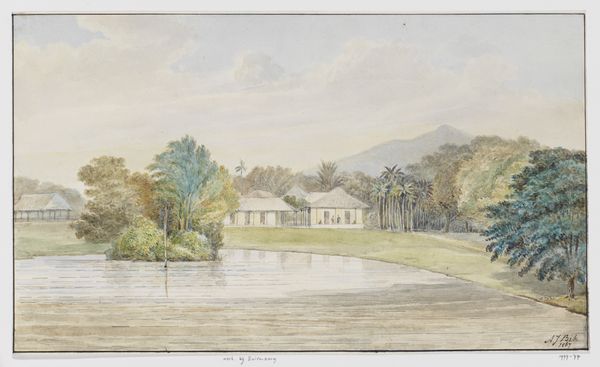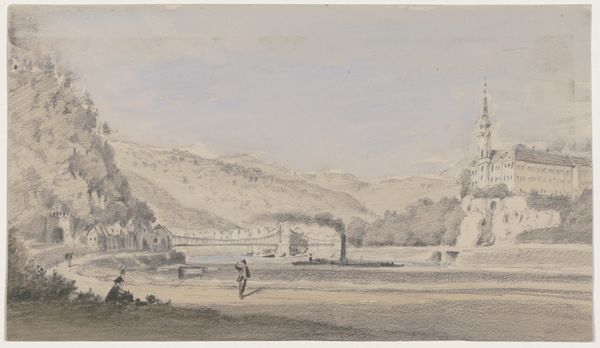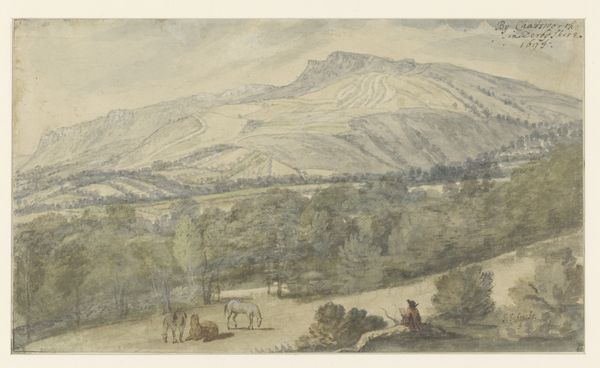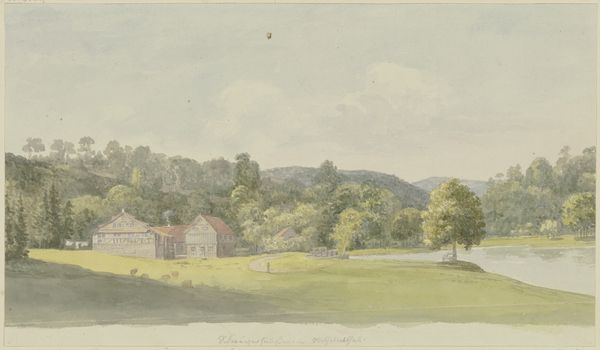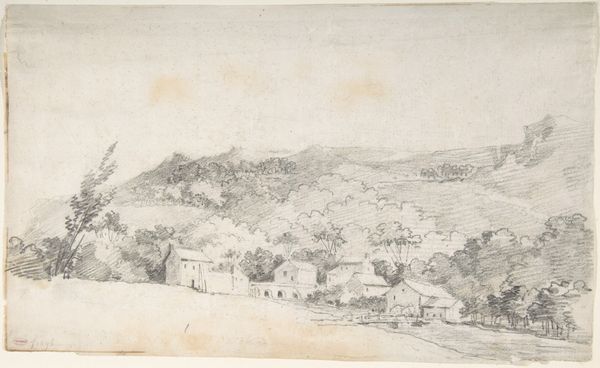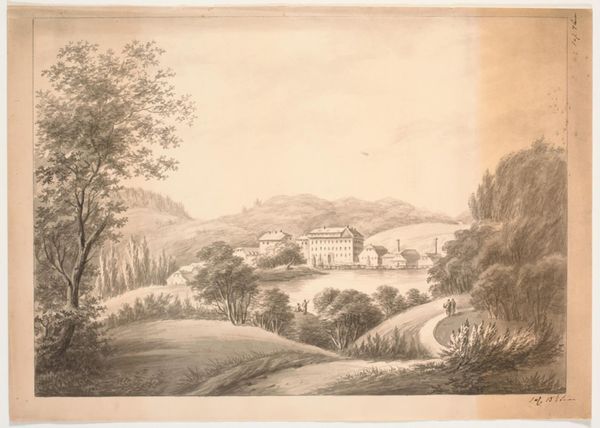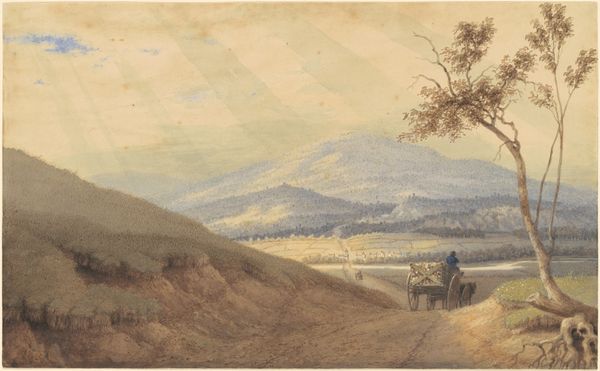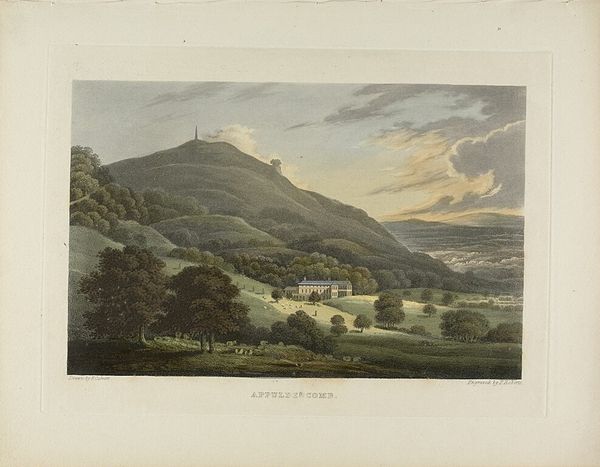
Dining Room and Stage Offices at White Sulphur Springs 1832
0:00
0:00
painting, watercolor
#
painting
#
landscape
#
watercolor
#
romanticism
#
cityscape
#
academic-art
Dimensions: 7 7/16 x 10 3/8 in. (18.9 x 26.4 cm)
Copyright: Public Domain
Editor: Here we have John Hazelhurst Boneval Latrobe’s watercolor, "Dining Room and Stage Offices at White Sulphur Springs," from 1832. I’m immediately struck by how the soft washes of color give it an almost dreamlike quality. What’s your take on this landscape? Curator: I find myself focusing on the materiality of the artwork itself. The choice of watercolor, a readily available and relatively inexpensive medium, speaks to a particular kind of artistic production of the time. It wasn't just about depicting a place, but about documenting it in a way that was accessible and replicable. Think about the rise of tourism and the demand for picturesque souvenirs. Editor: So, you’re saying that the *how* it was made is just as important as the *what*? Curator: Precisely! Consider the social context: White Sulphur Springs was a popular resort, a place where elites gathered. The watercolor, as a medium, could be reproduced and circulated, almost like an early form of advertising, further solidifying the social and economic status of the location. Who would have consumed these images, and how might the production and trade in images like these supported the labor of local people? Editor: That makes me see the people in the painting differently too. They’re not just figures; they are part of the social fabric that allows for the creation and consumption of this idyllic scene. The landscape itself becomes a commodity, right? Curator: Indeed. The very act of creating and possessing this image reinforced the hierarchy of leisure and privilege, subtly connecting the means of artistic production with broader social and economic systems. It's easy to see these older paintings as merely 'historical records', but even then there were specific people selling these paintings, people buying them, all caught up in a world of power and materials. Editor: This definitely shifts my perspective. I now understand there's more depth in appreciating a work like this if you consider the cultural implications of not only the image, but also the materiality, labor and production.
Comments
No comments
Be the first to comment and join the conversation on the ultimate creative platform.
